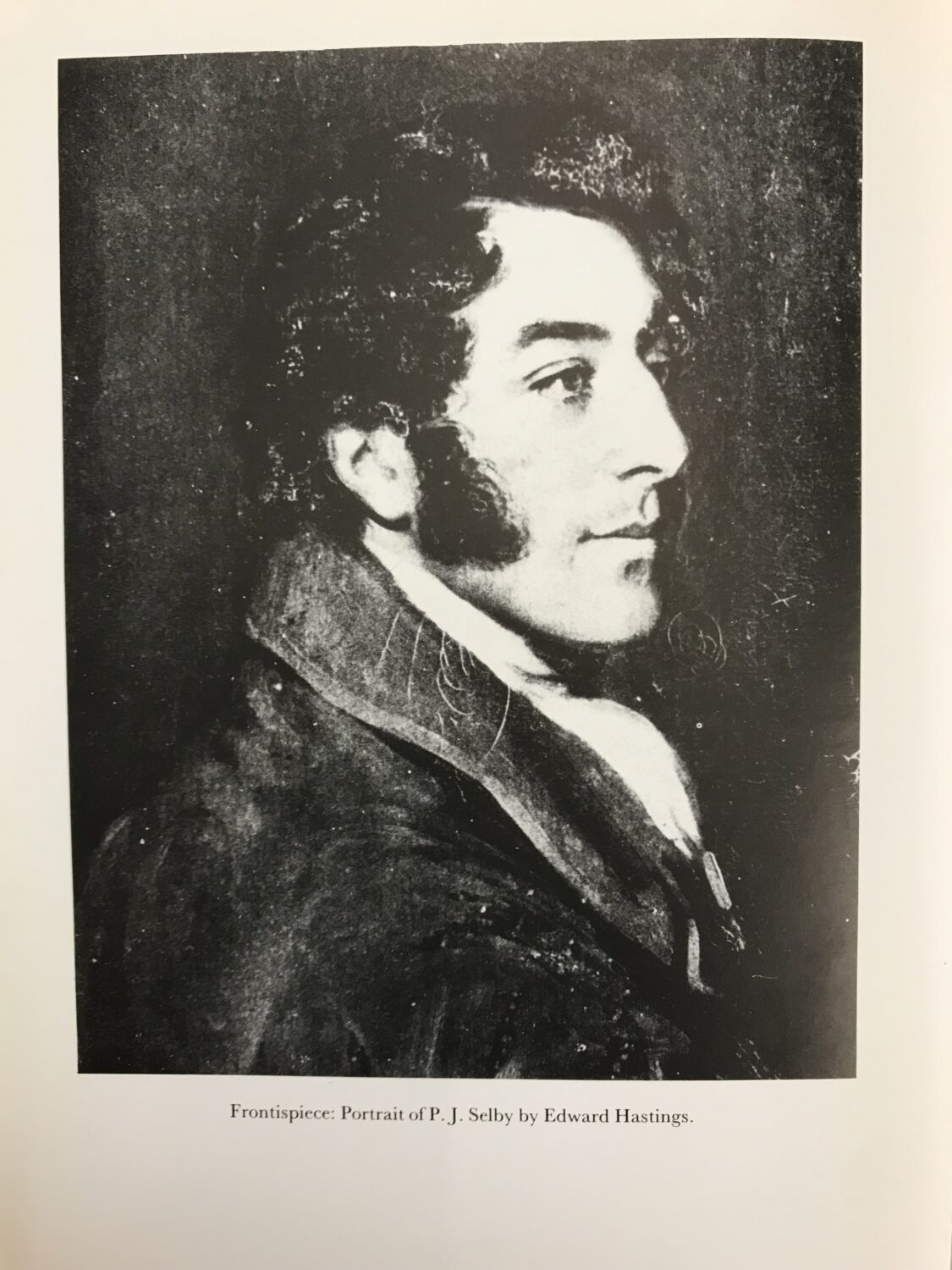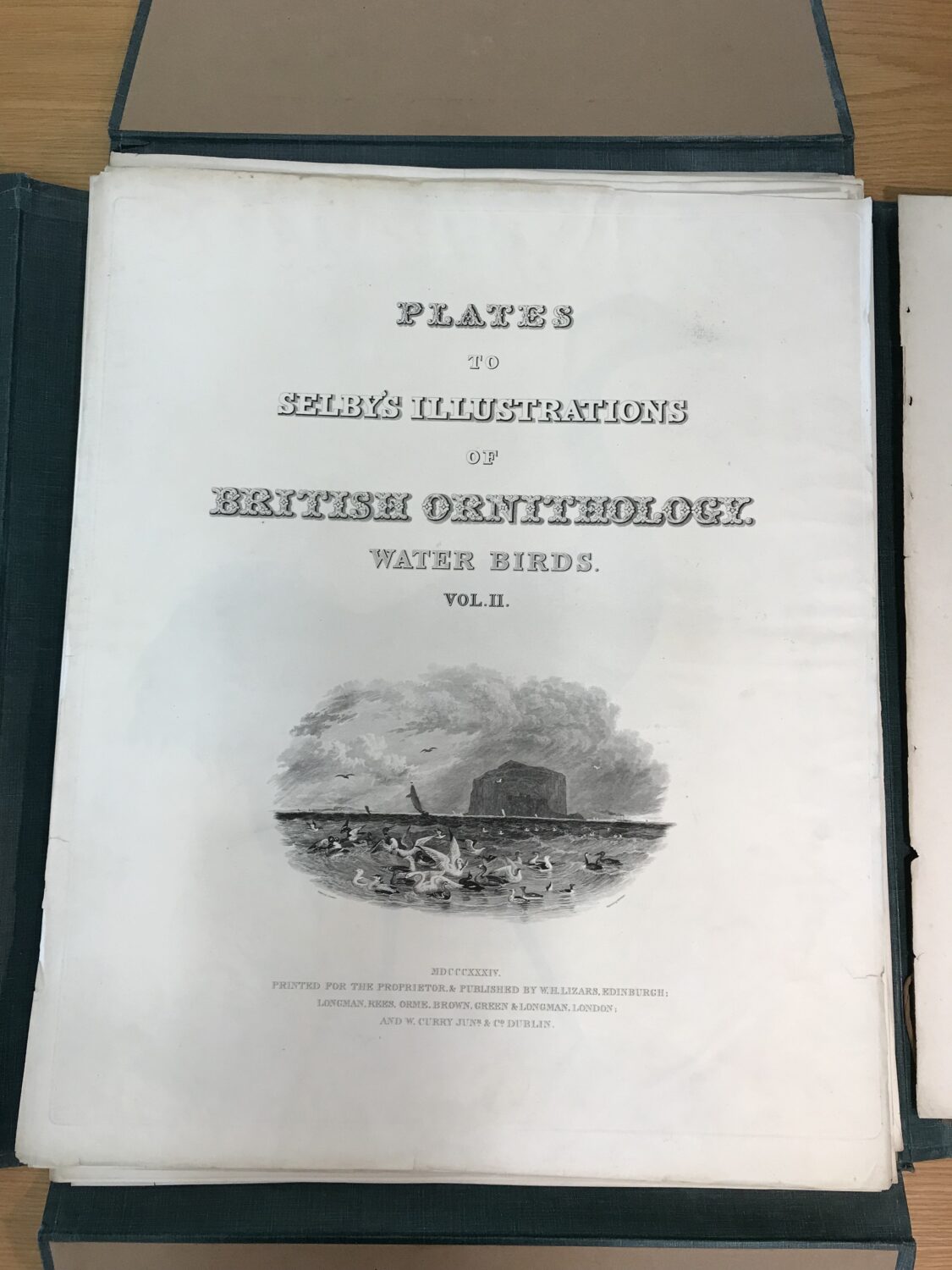Great North Museum: Hancock Library Volunteer, Ian Bower, takes a close look at yet another treasure from the NHSN collections sharing Selby’s fabulous illustrations of British birds
The formative years of the NHSN provide a fascinating glimpse into the study of the natural world in the early 19th century. The society was established in 1829 and one of its founding members was Prideaux John Selby. He was born in Alnwick in July 1788 and was part of an old and established family prominent in the history of Northumberland. He was the heir to a large fortune and lived on the Twizell Estate. He became a magistrate and Deputy Lieutenant of his home county, and his wealth and position provided him with the time and resources required to follow the pursuits of a country gentleman and naturalist.
From an early age Selby had developed a keen interest in nature and particularly in the study of ornithology. He displayed a precocious talent for illustration and by the age of thirteen he had compiled manuscript notes of the habits of the commoner British birds, accompanied by impressive, coloured drawings.
The book for which Selby is best remembered is his remarkable two-volume publication “Illustrations of British Ornithology” published in 19 parts between 1819 and 1834, commencing when Selby was forty-six. His ambitious aim was to publish a work that contained the most up-to-date, life-size illustrations of British birds.


The nineteenth century emerged as a landmark period for the publication of beautifully illustrated ornithological works and Selby was an important part of this movement. Improvements in printing technology enabled the production of books incorporating larger images of greater quality than was previously possible. The emergence of an affluent readership who had a fascination with the natural world was also major factor in this development.
The copy of “Illustrations of British Ornithology” in the society’s library collection is in two volumes, the first dedicated to land birds and the second to water birds, mirroring Thomas Bewick’s earlier work on this subject. It was donated to the society in 1951 by Harry Tully, one of the NHSNs most generous benefactors.
The overwhelming initial response to viewing Selby’s two-volume work for the first time is its sheer physical size and the powerful visual impact of the dramatic images it contains. The illustrations are in elephant folio format, which is 27 by 21.5 inches in size. For each plate Selby made watercolour paintings of the species and then etched them onto a copperplate. The copperplate was then printed in Edinburgh and subsequently sold in either coloured or uncoloured format according to the customer’s choice. A subscription was needed both before and during publication of the parts, for each of which the customer paid £1 11 6d if uncoloured and £5 5 shillings if coloured. There were 280 illustrations in total, the majority of these were produced by Selby, but the famous ornithologist Sir William Jardine also provided some images. Another eminent contributor was Edward Lear who supplied a sketch of a Great Auk that served as the basis for the illustration included in Selby’s book.


Selby had met the enigmatic John James Audubon who was in Britain at that time on a campaign to obtain subscriptions for his monumental work “The Birds of America”. Audubon is known to have stayed with Selby at his home in Twizell in the summer of 1827. He also provided him with lessons in ornithological illustration when they met in Edinburgh. The important move towards pictorially representing birds in lifelike poses in their natural environment was also something that Selby learned from Audubon and subsequently incorporated into his work. This new approach can be seen and appreciated in the illustrations in Selby’s book.
Selby’s book attracted many positive reviews from his contemporaries in the study of ornithology when it was published. The illustrations of birds of prey it contained were particularly admired and appreciated
The book was a financial as well as a critical success, with several editions being published that provided a well-earned profit for Selby. In the years following the publication of the book Selby’s enthusiasm for birds and their illustration waned and he became interested in another area of the natural world, including ichthyology and arboriculture. He published a book titled “A History of British Forest-Trees Indigenous and Introduced” in 1842, and as part of the celebrated Naturalist Library series was responsible for the books on parrots and pigeons. All of these books are included in the society’s library collection.
As well as being a founder member of the society, Selby was one of its first Vice-Presidents and took an active interest in the work of the Hancock Museum in its early years. Many of Selby’s long letters concerning the collection of birds are preserved in the archives of the society. He died at Twizell on March 27 1867 at the age of 79 and was buried at Bamburgh.
If you would like to know more about the life and times of Selby, there is a biography of him by Christine E Jackson, titled “Prideaux John Selby – A Gentleman Naturalist” in the library collection that can be borrowed if you are a member of the society.
It is possible to view the two-volume set of “Illustrations of British Ornithology”, though you will need to contact the library to make the necessary arrangements. Please send an email to gnmlibrary@twmuseums.org.uk.